THE DOCTOR'S FIRST PARTY - THE ANNIVERSARY:
 Dr. Moore has a party to celebrate her hospital being open for a year. Barnaby brings his wife and Toby comes with Barnaby's daughter, I think her name is Cilly. This is where the young resident says he would do anything for the doctor and the two daughters are standing next to him. They roll their eyes at him and the younger one giggles at him. They think he's a fool.
Dr. Moore has a party to celebrate her hospital being open for a year. Barnaby brings his wife and Toby comes with Barnaby's daughter, I think her name is Cilly. This is where the young resident says he would do anything for the doctor and the two daughters are standing next to him. They roll their eyes at him and the younger one giggles at him. They think he's a fool.
Troy still doesn't like the closeness between his boss and Dr. Moore. He decides to leave with Cilly and he wants to go to the obstacle course at the hospital and climb the elaborate rope climbing.
Cilly sees movement in the bushes, but she dismisses it because it was only a second. The viewers know there's someone in the bushes. Troy tries to climb but he's a little tipsy from drinking and he falls down onto the ground and laughs. Cilly says, I'll show you how it's done. She climbs up with no trouble and as she comes to the top, she looks up and the young resident is dead and hanging from a hangman's rope. Cilly tells her father the next day at lunch about seeing the bushes move and thinking someone else was there but she can't be sure.
The medical examiner says that this victim was drowned in the creek behind the climbing equipment and dead first before he was strung up. They also found Tetrine in his pocket, the same pills that Martin Roth had taken. It's starting to look like maybe it was the resident who was the murderer.
THE DRUM MAJORETTE OUTFIT HAS ARRIVED:
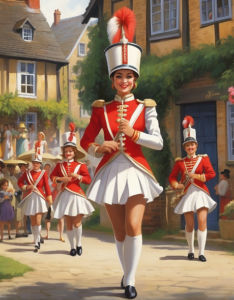 Now, in the next scene, the chemist is on the phone and he's whispering to someone that a little something has come in the mail and maybe you'd like to come and see me sometime. You hear his baby in the background which makes him seem even more sleezy.
Now, in the next scene, the chemist is on the phone and he's whispering to someone that a little something has come in the mail and maybe you'd like to come and see me sometime. You hear his baby in the background which makes him seem even more sleezy.
DR. MOORE STICKS UP FOR HER RESIDENT:
The two cops are in the hospital looking through a bunch of stuff. Troy tells the doctor that the resident had Tetrine pills in his pocket and she replied that he probably had them to give to the patients. Troy asked here, why did he bring them to the party. You can tell there's a little tension between the doctor and Troy.
Then the older cop shows the doctor that there's a letter he found. He's holding a letter about Dean Honeysette, stating that in light of his recent behavior, he recommends that all of his privileges are suspended. Being a gardener off premises is a big privilege. It was signed by the resident. This makes the viewer believe that this would be a reason for Dean to kill the resident, to protect his privileges.
THE COPS TALK TO DEAN AT THE HOSPITAL:
 The cops find Dean in the hospital and he's very guarded and uncooperative -- also still pretty weird too. And they asked him where he was last night when the resident was killed and he claims he has an alibi. He was in the wing of the hospital and there are 4 people who saw him. It was lights out at 9:30 and he claims he was in bed.
The cops find Dean in the hospital and he's very guarded and uncooperative -- also still pretty weird too. And they asked him where he was last night when the resident was killed and he claims he has an alibi. He was in the wing of the hospital and there are 4 people who saw him. It was lights out at 9:30 and he claims he was in bed.
They ask him about his criminal record and it comes out that he was a car thief but he did resort to strangling someone then.
Dean tells the cops that he didn't kill the first guy and he said he didn't kill the second guy (the resident), but he thinks the second guy who died was weak. He said this place needs strong people like him and Dr. Moore. He claims that people look up to him and feel that he has been through everything and is still okay.
Dean also tells them that he told the doctor not to put the obstacle/exercise course along the river creek in the back, but the rope guy insisted that's where it should go. He knew it was going to be trouble.
THE COPS GO SEE THE ROPE GUY:
As the cops pull up to see the Rope guy, he is acting weird and says that he loves rope, the feel of it. He asks the cop to smell the rope and reveals it's the best rope in the world. It's from the middle east somewhere.
He goes on to tell them that his family before him were Rope Guys. He had a distant relative who was a hangman. He says this with pride. He comes off like a nutball and he could easily be the culprit. It also comes out that Martin Roth also owed him money. They were supposed to go into business together. He shows the cops a stand that has a few handmade toys or some kind on it. That was the money Roth never gave him.
THE CLOTHESLINES BEGIN TO DISAPPEAR:
 Then in the next scene, with no explanation to the viewer, you see a woman taking clothing off of a clothesline, an innocent domestic scene. She has her children in the yard with her. After she leaves, someone off camera comes up and cuts the clothesline at both ends and takes the rope away. No explanation.
Then in the next scene, with no explanation to the viewer, you see a woman taking clothing off of a clothesline, an innocent domestic scene. She has her children in the yard with her. After she leaves, someone off camera comes up and cuts the clothesline at both ends and takes the rope away. No explanation.
MEET THE BABYSITTER:
The cops both go to talk to Gordon the chemist and Sarah his wife but they are out. The Doctor's daughter, Hannah, is babysitting. She gives him a cup of tea and they make pleasant conversation. She tells him she's nervous about what's happening all around them in the village. He tells her not to worry, they are on the case. She tells him she wishes they could all move away from there and go someplace where they could all take care of their mother. She asks Barnaby if he will be going to her mother's second event -- the second party. I can't remember what the occasion is, but it's the second party the doctor has at her place. Barnaby says, oh yes. Barnaby asks Hannah if she likes the marching band music. She says, oh, no, it's so silly with those outfits they wear. She rolls her eyes. She has no interest in it.
DR. MOORE'S SECOND PARTY:
 They go tot he party but this one is set up like a little town bizarre or carnival. Gordon and his band are all dressed up in their uniforms and they are playing music at the affair.
They go tot he party but this one is set up like a little town bizarre or carnival. Gordon and his band are all dressed up in their uniforms and they are playing music at the affair.
In the background, the rope guy is present and acting generally weird, but nothing relevant, just weirdo stuff, looking mean and dastardly as he was playing one of the carnival games.
Dean is also there and he is wearing his Nazi look and demeanor. He's eating something and just pushing it into his mouth like a complete nut ball.
Mary Mays husband is a referee and he is organizing them into a tug of war. On one side is Dean the weirdo and his bunch of other guys. On the other side is The Rope Guy and his bunch of other guys. As Mary's husband counts down, the guys begin to pull before he says go and they all wind up falling down. The ref begins to scold them and Dean comes up and starts strangling him. The cops come and wrestle them apart.
Just at that moment, Mary Mays shows up and says what's going on here? And she reports on a terrible crime that just occurred at her house. They go and her clothesline has been put down. Hers and her neighbors. She left the crime scene alone, in other words, the clothing was still on the ground. Troy is about ready to roll his eyes when she refers to it as a crime scene.
Troy also tells Barnaby that he should arrest Dean because he's dangerous and he had the motive and means to be the killer of all of of them. Barnaby doesn't want to act yet. Troy thinks he is allowing his feeling for the doctor to get in the way.
THE CHEMIST GOES ON HIS SECRET RONDEVOUS:
The camera shows Gordon put son a new uniform he bought, adjusts his hat, opens the door and says, "I'm glad you were able to come". Viewer can't see who is at the door. Scene ends.
ANOTHER ROPE CUTTING:
Mary May's husband throws the garbage out from his business on Main Street. He looks across the street and someone has cut the rope that was holding his English flag up and it's now laying on the ground. He's outraged and like his wife, he considers this a serious crime and call the cops.
As Troy is dealing with Mary's husband, he looks over and sees Sarah with her baby in a carriage knocking on the pharmacy door calling out her husband's name. Troy goes over and finds out Gordon never came home last night.
Two musicians show up to the music room for practice and knock, but no one answers. They think it's odd, but wait. Then they go in and see Gordon has been hung from the back of the door in the music room. He's dead.
When Barnaby and Troy show up, they see scuffle marks and they believe that he too was killed first, and then strung up. It's all about the rope. His wallet and valuables were still present. It wasn't a robbery. They notice a package wrapping that is left on a couch. They trace it and find out it was for a majorette's outfit.
MORE CLOTHESLINES:
There is another inexplicable scene where you see a farmer riding on his tractor. Off to the side he sees something. The camera shows rows and rows of clotheslines that are holding some kind of brownish muslim sacks. There's no explanation. In the midst of these sack is a the new Major music jacket Gordon bought for himself. The scene ends without any real explanation.
DR. MOORE IS AGAIN HORRIFIED:
The cops go and tell Dr. Moore and she says it's horrible. She comments that he was harmless. She can't fathom why anyone would kill him. She tells them she has to show them something. She brings them into the back of the hospital and all the ropes have been removed from the obstacle/exercise course.
THE COPS VISIT THE ROPE GUY AGAIN:
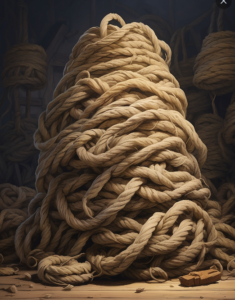 The two cops go to visit the rope guy and when they arrive, he is walking out of his business. He tells them he was about to come and see them. He shows them that he has been cleaned out. Every rope he owned is gone. All of it. He only left to get something to eat, he couldn't have been gone fore more than an hour or so.
The two cops go to visit the rope guy and when they arrive, he is walking out of his business. He tells them he was about to come and see them. He shows them that he has been cleaned out. Every rope he owned is gone. All of it. He only left to get something to eat, he couldn't have been gone fore more than an hour or so.
BARNABY MEETS WITH SARAH:
Troy still thinks the killer is Dean. Barnaby is still investigating. He goes to see Sarah Roth, the Chemists grieving girlfriend. She is upset about losing Gordon. Barnaby asks her if she ever noticed the trophy missing. She said, no, she didn't. He asks if her husband every told her it was missing. She said no. Barnaby asks if maybe Hannah the babysitter could have taken it. Sarah scoffs and says, no, she would never do anything like that.
Barnaby asks her if she knows anything about her husband getting a drum majorette's outfit. She said, no, he didn't mention it, but she knew he wanted to get majorettes for his band, but she told him she thought the village was too conservative for that. She wasn't alarmed at all by his behavior. Sarah tells Barnaby that Gordon thought her ex-husband took the trophy and that could be because he was always hanging around, watching them, and starting trouble.
BARNABY CHECKS OUT THE FARM WITH ALL THE CLOTHESLINES:
Next scene is Barnaby going to talk to the farmer and there is a cricket game or some other English sport going on with the doctor's step son. The two girls, Hannah and her younger sister are sitting on a blanket with food and tea. They give Barnaby a tea.
The younger sister gets weird and asks Barnaby if he's ever been on a picnic with their mom. He says no, and she says, I bet you would like to. Her sister tells her to be quiet. Barnaby takes it all in. He takes the musician's coat that was hanging on the clothes line and he goes into his car. He puts his head back and closes his eyes like he wanted to take a nap.
When he wakes up, it's dark outside. He looks around and he sees some kind of movement over by the clotheslines. He gets out and goes over to see what is going on. Someone throws a rope around his neck and begins to strangle him.
Just in the nick of time, Troy pulls up and beeps his horn. Whoever was strangling Barnaby is thrown to the ground. He is taken to Dr. Moore's house and given some whiskey or something to settle him down. Her kids are all there with her. Barnaby is nursed back into shape by Dr. Moore and her kids.
THE COPS GO LOOKING FOR DEAN:
After this, the two cops go looking for Dean. He hasn't returned to the hospital. They find all kinds of rope in his closet. Then they go back on the grounds to another area that he used to work in. They open up a shed and there's more rope inside there too.
Dean shows up and tells them that he saw Troy and his girlfriend in the yard that night. He was ready to cut the doctor down, but they showed up. (This resolves who was in the bushes when Cilly saw them moving).
He then says that he had to remove all the ropes so the killing would stop. It was the only thing that would stop the killing. Barnaby asks him how many are we talking about? He doesn't answer. He then refuses to talk.
BARNABY FIGURES IT OUT ON HIS OWN:
 In the next scene, a white van pulls up and the school kids get off. Dr. Moore's kids are on the bus. They are then taken into custody and separated for questioning. Barnaby starts with the older sister.
In the next scene, a white van pulls up and the school kids get off. Dr. Moore's kids are on the bus. They are then taken into custody and separated for questioning. Barnaby starts with the older sister.
She is snotty and scoffing and basically unresponsive for awhile until she figures out they have evidence on her. She finally comes clean and admits that they killed everyone and she ends by saying "no one will ever take our mother from us."
THEN THE REAL PSYCHO ENTERS THE SCENE:
 The next scene is when the younger girl comes in for questioning. She asks where her mother is. There is a guardian there for her but not her mother. At first she just looks nervous.
The next scene is when the younger girl comes in for questioning. She asks where her mother is. There is a guardian there for her but not her mother. At first she just looks nervous.
Barnaby asks her a few preliminary questions and she is a little more cooperative than the sister. He asks her if she loved her dad and she said yes but goes on to admit she loves her mother more. Barnaby asks her if her brother and sister witnessed their father's death. She giggles and whispers to him that he didn't fall from the cliff, her brother and sister pushed him. She giggles and giggles. She's weirder than all three previous weirdos in the show. The actress playing the sister had spaces between her teeth and this made her seem crazier and more psycho when she giggled.
THE LAST SCENE - BARNABY IS REALLY A GOOD HUSBAND:
In the last scene, the older cops wife pulls up in her car and she seems like she doesn't know what's going on. She asks him why have you asked me to come here? He tells her I may need you for this. They stand together as a couple as Dr. Moore meets them.
The show ends by Barnaby putting his arm around Dr. Moore's shoulder and walking with her and his wife into her hospital. He is telling her that her kids are all psychos and they were the ones who killed all the people.
The only thing that was left out of this narration, to the best of my knowledge, is that when Hannah and Barnaby were talking, it showed Hannah pulling the fish wire to fire the gun. It also showed all three kids holding the Resident underwater to drown him. They also showed the brother strangling Gordon while the two girls taunted him by mimicking drum majorettes.
WHAT I LEARNED AS AN AUTHOR:
I found it surprising that they had about three scenes where nothing happens except characters act mean and crazy. Like other viewers, I didn't think twice about it as I watched the show the first time. I just thought these guys looked guilty or crazy and could be a suspect.
Secondly I learned that there was very little if any foreshadowing about the sisters during the entire show. Aside from their connection to the head of the hospital, there was no real connection to them until almost the end when it was time to wrap up the 1.5 hour murder show. I didn't think anything of this when I watched the first time which means the author got away with it!
Thirdly, I learned that bookending grewsome scenes in between two sweet domestic scenes makes the horror worse somehow. This is an important takeaway.
Fourthly, I learned that you don't always have to offer a reason right away for a character acting weirdly. It's okay to have some scenes where something strange happens with no explanation until later on.
Next I learned that there was no mention of the absurdity of having this serial killer on the loose in a small village in England and there's no press around and people seem to just take it in their stride. In the same way that a person agrees to suspend belief in a horror or science fiction movie, they will also suspend belief about the level of murder for the sake of a good murder mystery.
I also noted that the two sisters were not weird at all during the entire show, but in the last scene, for the sake of a little horror, the writer made the girls quite ruthless and horrible. To me, this also relies on the reader/viewer agreeing to suspend belief for the sake of a good mystery.
WHAT DO YOU THINK?
If you would like to discuss this show, email me at rshannon at readfirstchapter dot com.
 There are many blog posts and videos on the internet about how to write a novel. Much of the advice is general in nature and only broad-stroke tips. This video seeks to go one step further and open my last book, which is still being proofread in Layer 8, and show a work-flow demonstration.
There are many blog posts and videos on the internet about how to write a novel. Much of the advice is general in nature and only broad-stroke tips. This video seeks to go one step further and open my last book, which is still being proofread in Layer 8, and show a work-flow demonstration.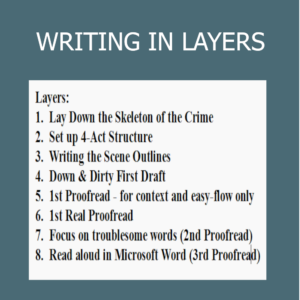 I am in the process of finishing my 14th novel. I started out like many of you as a self-taught author who took in unorganized, uncurricularized information and had to make sense of it all. I devised this 8 Layer system to try to write a novel as efficiently as was possible. I offer it to you for whatever weight you wish to give it.
I am in the process of finishing my 14th novel. I started out like many of you as a self-taught author who took in unorganized, uncurricularized information and had to make sense of it all. I devised this 8 Layer system to try to write a novel as efficiently as was possible. I offer it to you for whatever weight you wish to give it.
 In a mystery, crime novel, or thriller, the clues and their revelations need to be planned so the story clues can remain disjointed in the beginning, but then slowly come together like a jigsaw puzzle. This keeps the reader guessing -- which is part of the mystery readers' enjoyment.
In a mystery, crime novel, or thriller, the clues and their revelations need to be planned so the story clues can remain disjointed in the beginning, but then slowly come together like a jigsaw puzzle. This keeps the reader guessing -- which is part of the mystery readers' enjoyment.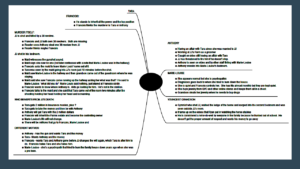
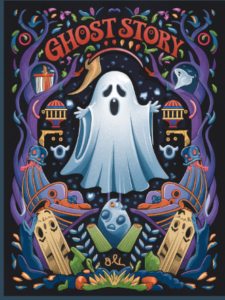 1. Who is the Ghost? Why has the Ghost arisen? Why is the Person not Resting in Peace? What is the Ghost's purpose for appearing? This is the backstory that will be dropped like breadcrumbs throughout the storyline. (Ghost-Story.png)
1. Who is the Ghost? Why has the Ghost arisen? Why is the Person not Resting in Peace? What is the Ghost's purpose for appearing? This is the backstory that will be dropped like breadcrumbs throughout the storyline. (Ghost-Story.png)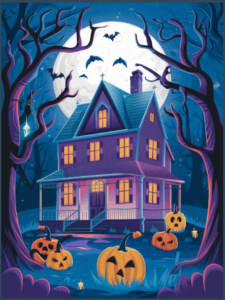 1. What is it about the house that's creepy?
1. What is it about the house that's creepy?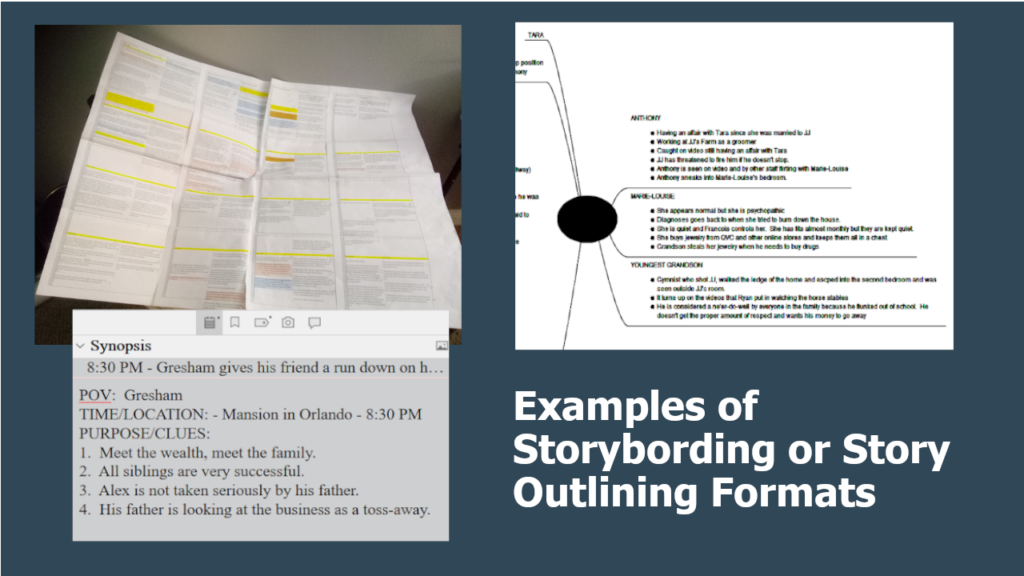
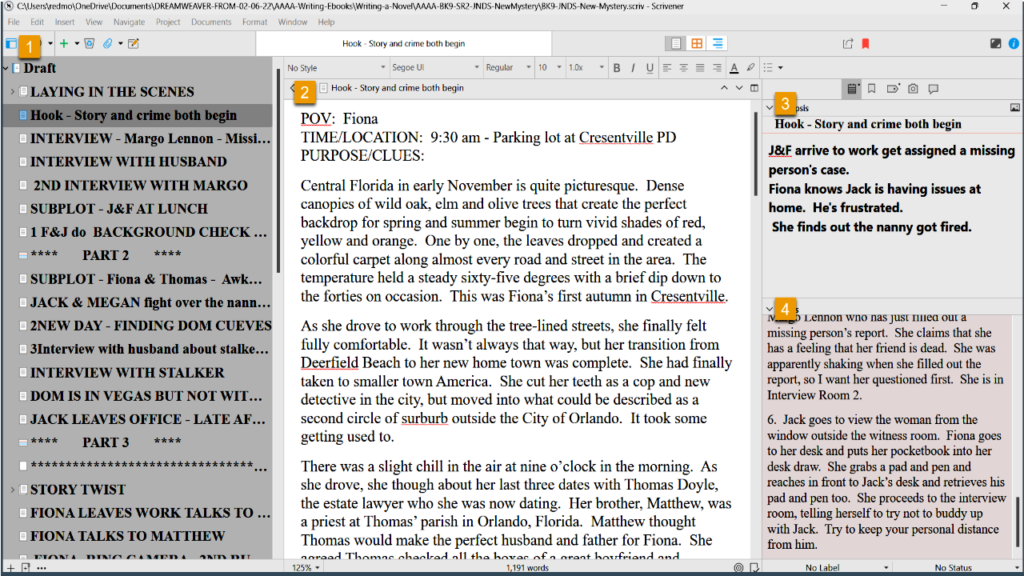
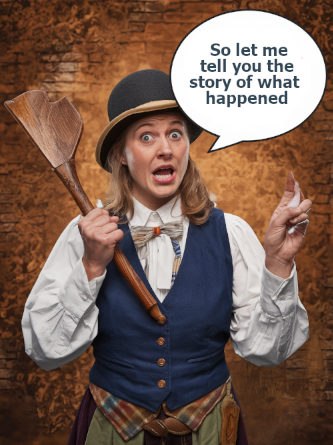 It may help to think of yourself as more of a Town Crier.
It may help to think of yourself as more of a Town Crier. 1. Using the read aloud feature in Microsoft Word, I read the book aloud as I read along with it. This gives you an idea of how the book will sound in the reader's mind.
1. Using the read aloud feature in Microsoft Word, I read the book aloud as I read along with it. This gives you an idea of how the book will sound in the reader's mind. Most of these mistakes were ones that were not even on my radar at the time they were made.
Most of these mistakes were ones that were not even on my radar at the time they were made. When I first got the idea of writing a novel, I did research for about a year. I read several how to books on every subject under the title of writing a novel and self-publishing. (Cat on book shelf)
When I first got the idea of writing a novel, I did research for about a year. I read several how to books on every subject under the title of writing a novel and self-publishing. (Cat on book shelf)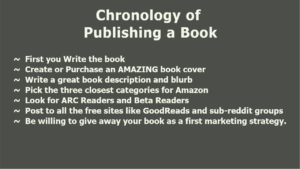 So above is a list of the chronology I pieced together as being the proper chronological list of how to write and publish a book:
So above is a list of the chronology I pieced together as being the proper chronological list of how to write and publish a book: Beta Readers often times read books very early in the process -- before the book is even finished to give early feedback. This is a great idea if you're not sure about your characters or if the plot is good enough, etc. Let's face it, in the beginning it's hard to think you're book is a masterpiece when it's your first one -- at least it was for me. There is a definite high-level purpose in having Beta Readers. They are worth their weight in gold.
Beta Readers often times read books very early in the process -- before the book is even finished to give early feedback. This is a great idea if you're not sure about your characters or if the plot is good enough, etc. Let's face it, in the beginning it's hard to think you're book is a masterpiece when it's your first one -- at least it was for me. There is a definite high-level purpose in having Beta Readers. They are worth their weight in gold. However, here is where I made the terrible mistake and found out the hard way about this particular landmine: I offered my Vampire book Darius - A Vampire Story as a beta book but it had not been finalized, professionally edited or proofread. Now, in the ad copy for the link to download, I clearly posted it as a beta copy that had not been edited, etc. However, once a book is downloaded to an eReader, no one will remember this book is only a beta copy. And the second mistake I made here was that I didn't put anything in the book itself.
However, here is where I made the terrible mistake and found out the hard way about this particular landmine: I offered my Vampire book Darius - A Vampire Story as a beta book but it had not been finalized, professionally edited or proofread. Now, in the ad copy for the link to download, I clearly posted it as a beta copy that had not been edited, etc. However, once a book is downloaded to an eReader, no one will remember this book is only a beta copy. And the second mistake I made here was that I didn't put anything in the book itself. The first time this happened, I just thought the reader was a bit crazy. But after this happened several times, it was only then that I realized that I had released hundreds of beta copies that now lived on people's eReaders. And for some reason, there are a lot of readers who take typos or grammar errors personally. It seems to trigger them and their reviews are more like rants.
The first time this happened, I just thought the reader was a bit crazy. But after this happened several times, it was only then that I realized that I had released hundreds of beta copies that now lived on people's eReaders. And for some reason, there are a lot of readers who take typos or grammar errors personally. It seems to trigger them and their reviews are more like rants.
 GoodReads is probably the largest single pool of avid readers and book lovers out there. But goodreads can be a tough crowd for new writers. This is where Darius's bullying started. If I had to do things over again, I would not have focused on Goodreads as a first place to release my books -- even after they were fully edited and proofread. Unfortunately, many of the videos I watched during that first year, talked about how great goodreads was helpful to find beta readers and arc readers and launch a book.
GoodReads is probably the largest single pool of avid readers and book lovers out there. But goodreads can be a tough crowd for new writers. This is where Darius's bullying started. If I had to do things over again, I would not have focused on Goodreads as a first place to release my books -- even after they were fully edited and proofread. Unfortunately, many of the videos I watched during that first year, talked about how great goodreads was helpful to find beta readers and arc readers and launch a book. I didn't realize that the categories on Amazon have a hierarchy to them. It may have been because we were originally allowed to put each book into 10 categories. I had watched a video by
I didn't realize that the categories on Amazon have a hierarchy to them. It may have been because we were originally allowed to put each book into 10 categories. I had watched a video by 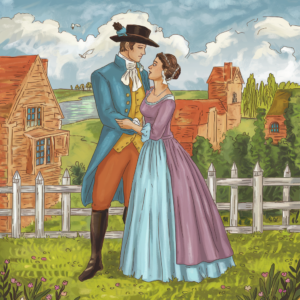 So the time to think about the categories is before you even plot out or write the book. Once you have a plot idea, that's the time to look at the categories and think about where the book would fit, and what you can tweak about the storyline to fit into a sub category or a less competitive category? Can you make the story happen in the west to be a Western Romance? Can you put the story into olden times to make it a historical novel, ore even better, put it in a specific time period? The time to think about categories is right after you have know you have a workable plotline.
So the time to think about the categories is before you even plot out or write the book. Once you have a plot idea, that's the time to look at the categories and think about where the book would fit, and what you can tweak about the storyline to fit into a sub category or a less competitive category? Can you make the story happen in the west to be a Western Romance? Can you put the story into olden times to make it a historical novel, ore even better, put it in a specific time period? The time to think about categories is right after you have know you have a workable plotline. Mistake Number five requires a little explanation. My inspiration for my vampire series was the old Dark Shadows Soap Opera from the late '60s and early '70s. I never watched it as a kid but everyone I knew did. I didn't watch it because I had to walk too far to get home from school in time. This vampire series, like most soap operas at that time, was melodramatic and being a gothic and supernatural story, the storylines were completely crazy. But I loved the show anyway.
Mistake Number five requires a little explanation. My inspiration for my vampire series was the old Dark Shadows Soap Opera from the late '60s and early '70s. I never watched it as a kid but everyone I knew did. I didn't watch it because I had to walk too far to get home from school in time. This vampire series, like most soap operas at that time, was melodramatic and being a gothic and supernatural story, the storylines were completely crazy. But I loved the show anyway. So, with limited knowledge of the whole vampire genre, I went on to write a vampire book series. My vampire owns and operates a funeral home and keeps a bevy of 3 women to supply the blood he needs. He normally picks up runaways from the train and bus stations, but he winds up falling in love with the daughter of a wealthy, influential family in Newport Rhode Island. There is also a monastery of monks that live on the opposite side of the cemetery that Darius also owns.
So, with limited knowledge of the whole vampire genre, I went on to write a vampire book series. My vampire owns and operates a funeral home and keeps a bevy of 3 women to supply the blood he needs. He normally picks up runaways from the train and bus stations, but he winds up falling in love with the daughter of a wealthy, influential family in Newport Rhode Island. There is also a monastery of monks that live on the opposite side of the cemetery that Darius also owns. So how does all this fit into mistake number 5? Well, there's no category for tongue-in-cheek vampire stories. Also, fifty years have passed since this show ended and a lot has happened to the vampire genre in that time. First there was Anne Rice and her books and subsequent movies which are all dead serious and there's no tongue in cheek humor of any kind. I only read the first book and it was steeped in darkness and despair. Because I read for enjoyment, the level of despair was too much for me so I never read the other books.
So how does all this fit into mistake number 5? Well, there's no category for tongue-in-cheek vampire stories. Also, fifty years have passed since this show ended and a lot has happened to the vampire genre in that time. First there was Anne Rice and her books and subsequent movies which are all dead serious and there's no tongue in cheek humor of any kind. I only read the first book and it was steeped in darkness and despair. Because I read for enjoyment, the level of despair was too much for me so I never read the other books.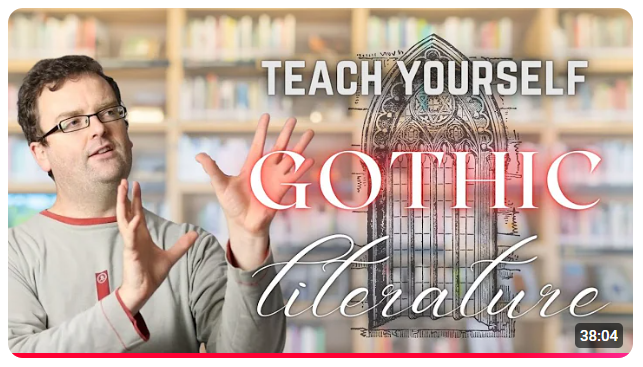
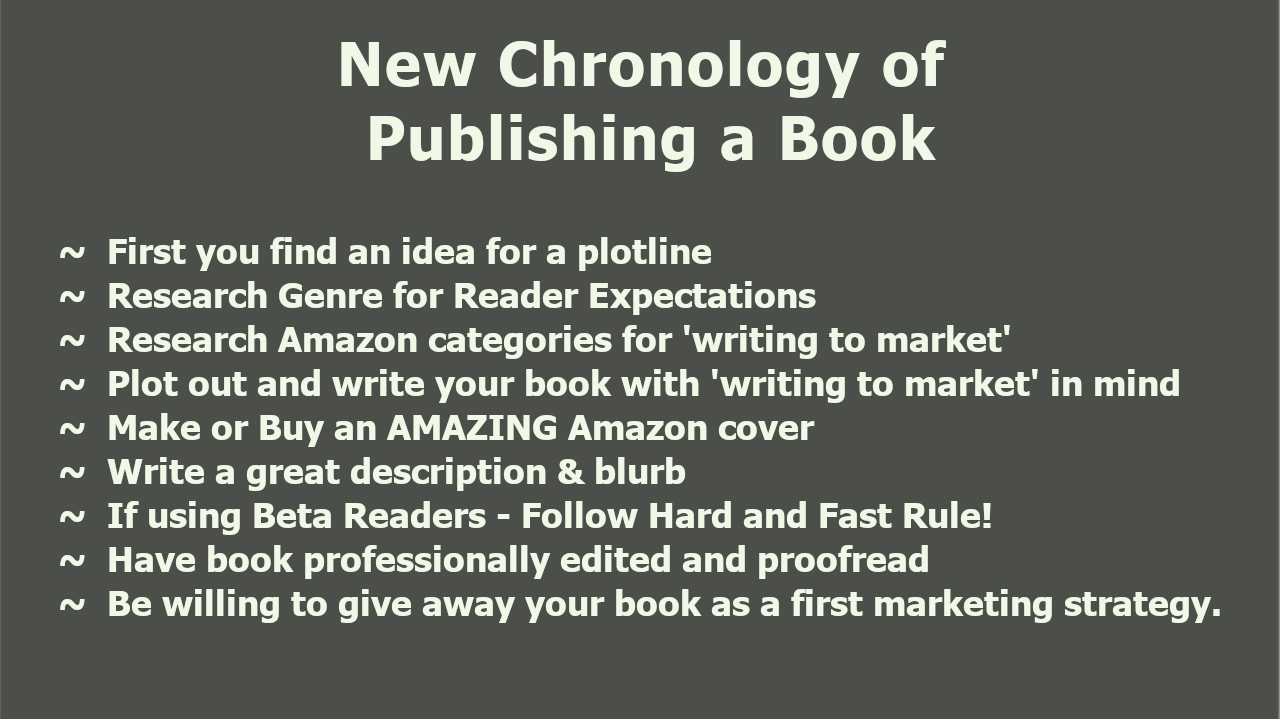
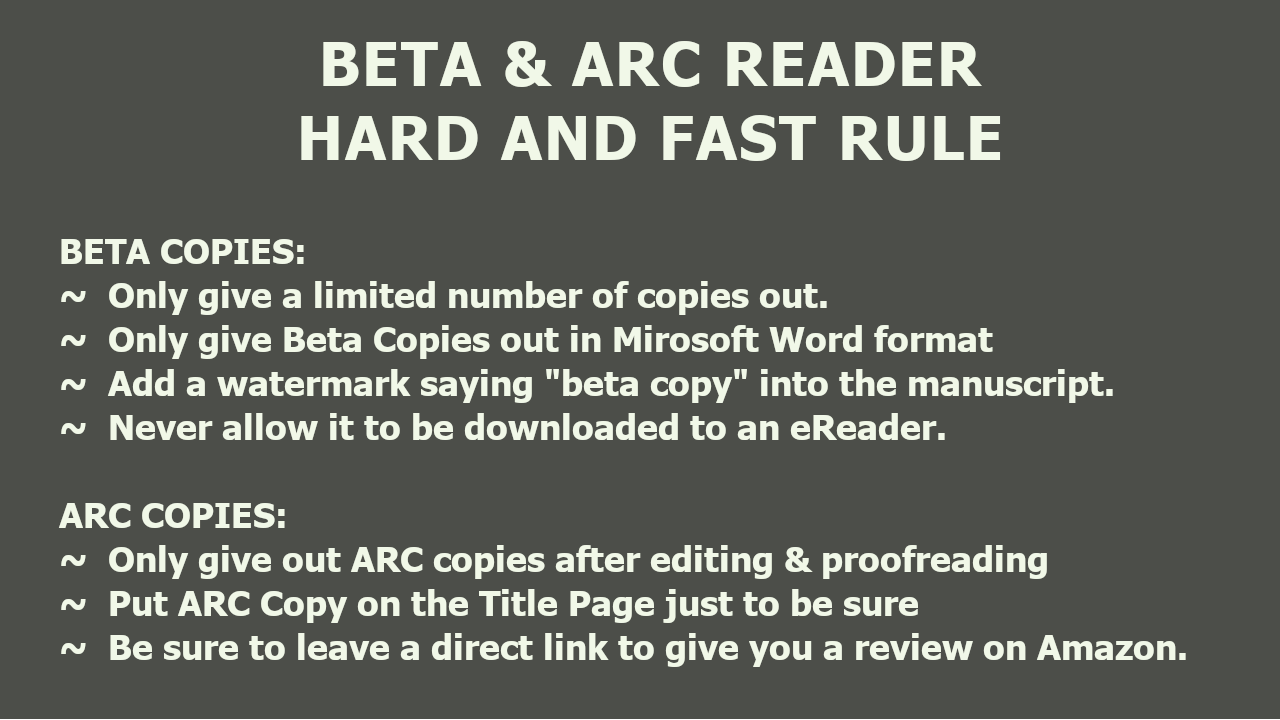
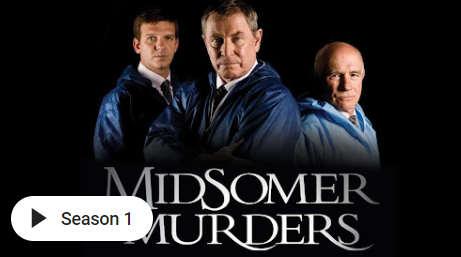 I've started watching several British Midsomer Murder Mysteries during the last two weeks while I proofread my latest novel, Where is Lucia. I love the British mysteries as they are famous for having several suspects in the story, all of whom seem guilty. And the real murderer is always a shocking surprise.
I've started watching several British Midsomer Murder Mysteries during the last two weeks while I proofread my latest novel, Where is Lucia. I love the British mysteries as they are famous for having several suspects in the story, all of whom seem guilty. And the real murderer is always a shocking surprise.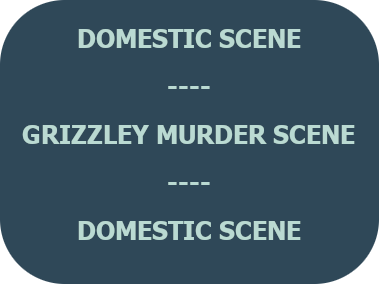 This show opened with the camera walking through a common middle-income family home. A radio was playing a call in show. The woman speaking was referring to her kids being downstairs and probably laughing at her for calling the show. The announcer had the usual fake enthusiastic voice talking with her.
This show opened with the camera walking through a common middle-income family home. A radio was playing a call in show. The woman speaking was referring to her kids being downstairs and probably laughing at her for calling the show. The announcer had the usual fake enthusiastic voice talking with her. The next scene shows Det. Barnaby and Sgt. Troy show up and discuss what they see. Troy draws a conclusion that it has to be suicide. Det. Barnaby is not so sure. He wonders why the guy didn't just go outside and shoot himself; why the elaborate fish-wire setup.
The next scene shows Det. Barnaby and Sgt. Troy show up and discuss what they see. Troy draws a conclusion that it has to be suicide. Det. Barnaby is not so sure. He wonders why the guy didn't just go outside and shoot himself; why the elaborate fish-wire setup. Dr. Moore has a party to celebrate her hospital being open for a year. Barnaby brings his wife and Toby comes with Barnaby's daughter, I think her name is Cilly. This is where the young resident says he would do anything for the doctor and the two daughters are standing next to him. They roll their eyes at him and the younger one giggles at him. They think he's a fool.
Dr. Moore has a party to celebrate her hospital being open for a year. Barnaby brings his wife and Toby comes with Barnaby's daughter, I think her name is Cilly. This is where the young resident says he would do anything for the doctor and the two daughters are standing next to him. They roll their eyes at him and the younger one giggles at him. They think he's a fool. Now, in the next scene, the chemist is on the phone and he's whispering to someone that a little something has come in the mail and maybe you'd like to come and see me sometime. You hear his baby in the background which makes him seem even more sleezy.
Now, in the next scene, the chemist is on the phone and he's whispering to someone that a little something has come in the mail and maybe you'd like to come and see me sometime. You hear his baby in the background which makes him seem even more sleezy. The cops find Dean in the hospital and he's very guarded and uncooperative -- also still pretty weird too. And they asked him where he was last night when the resident was killed and he claims he has an alibi. He was in the wing of the hospital and there are 4 people who saw him. It was lights out at 9:30 and he claims he was in bed.
The cops find Dean in the hospital and he's very guarded and uncooperative -- also still pretty weird too. And they asked him where he was last night when the resident was killed and he claims he has an alibi. He was in the wing of the hospital and there are 4 people who saw him. It was lights out at 9:30 and he claims he was in bed. Then in the next scene, with no explanation to the viewer, you see a woman taking clothing off of a clothesline, an innocent domestic scene. She has her children in the yard with her. After she leaves, someone off camera comes up and cuts the clothesline at both ends and takes the rope away. No explanation.
Then in the next scene, with no explanation to the viewer, you see a woman taking clothing off of a clothesline, an innocent domestic scene. She has her children in the yard with her. After she leaves, someone off camera comes up and cuts the clothesline at both ends and takes the rope away. No explanation. They go tot he party but this one is set up like a little town bizarre or carnival. Gordon and his band are all dressed up in their uniforms and they are playing music at the affair.
They go tot he party but this one is set up like a little town bizarre or carnival. Gordon and his band are all dressed up in their uniforms and they are playing music at the affair. The two cops go to visit the rope guy and when they arrive, he is walking out of his business. He tells them he was about to come and see them. He shows them that he has been cleaned out. Every rope he owned is gone. All of it. He only left to get something to eat, he couldn't have been gone fore more than an hour or so.
The two cops go to visit the rope guy and when they arrive, he is walking out of his business. He tells them he was about to come and see them. He shows them that he has been cleaned out. Every rope he owned is gone. All of it. He only left to get something to eat, he couldn't have been gone fore more than an hour or so. In the next scene, a white van pulls up and the school kids get off. Dr. Moore's kids are on the bus. They are then taken into custody and separated for questioning. Barnaby starts with the older sister.
In the next scene, a white van pulls up and the school kids get off. Dr. Moore's kids are on the bus. They are then taken into custody and separated for questioning. Barnaby starts with the older sister. The next scene is when the younger girl comes in for questioning. She asks where her mother is. There is a guardian there for her but not her mother. At first she just looks nervous.
The next scene is when the younger girl comes in for questioning. She asks where her mother is. There is a guardian there for her but not her mother. At first she just looks nervous.
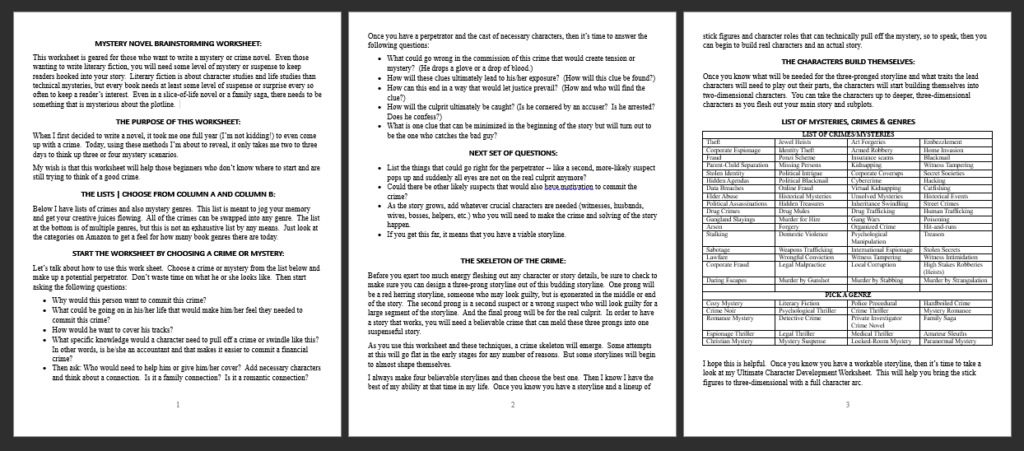
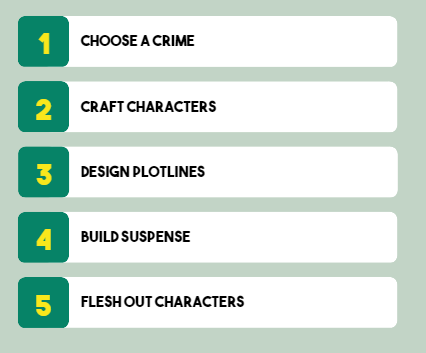
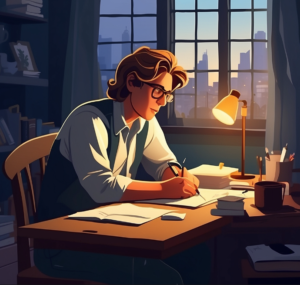 If you are stumped for a main story, or if you are stumped for what happens now, or even if you have written yourself into a bit of a corner, this instructional will help, along with your own creativity and thinking, to bring about new possibilities.
If you are stumped for a main story, or if you are stumped for what happens now, or even if you have written yourself into a bit of a corner, this instructional will help, along with your own creativity and thinking, to bring about new possibilities. 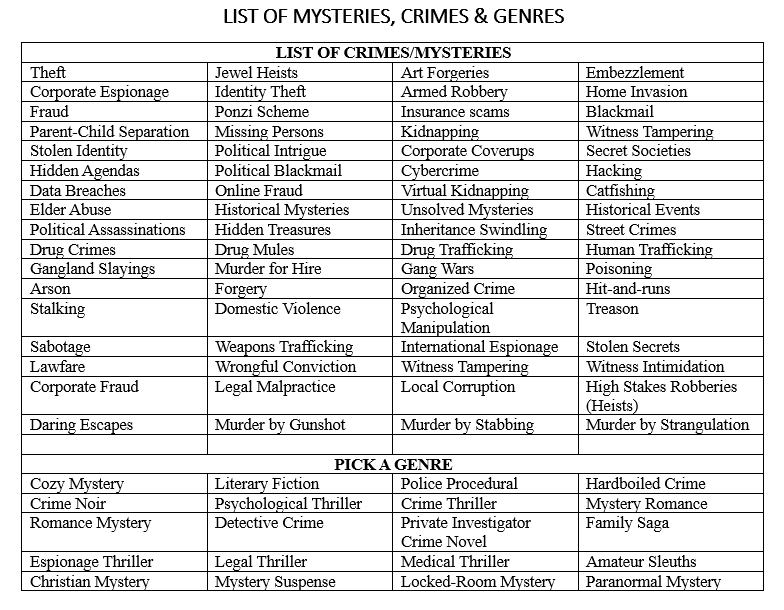

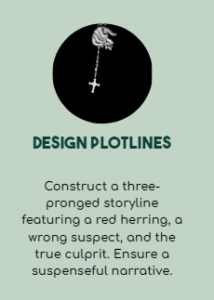 Once you have a perpetrator and the cast of necessary characters, then it’s time to answer the following questions:
Once you have a perpetrator and the cast of necessary characters, then it’s time to answer the following questions: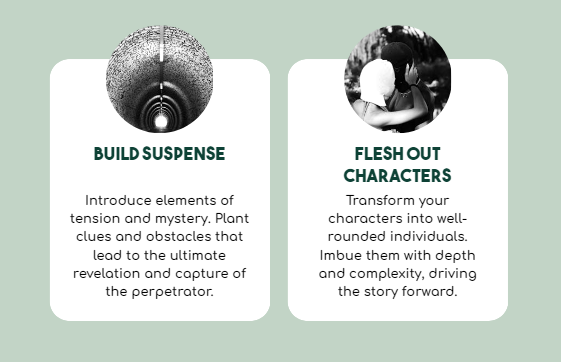
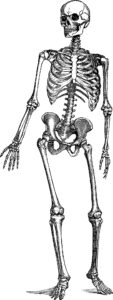 Before you exert too much energy fleshing out any character or story details, be sure to check to make sure you can design a three-prong storyline out of this budding storyline. One prong will be a red herring storyline, someone who may look guilty, but is exonerated in the middle or end of the story. The second prong is a second suspect or a wrong suspect who will look guilty for a large segment of the storyline. And the final prong will be for the real culprit. In order to have a story that works, you will need a believable crime that can meld these three prongs into one suspenseful story.
Before you exert too much energy fleshing out any character or story details, be sure to check to make sure you can design a three-prong storyline out of this budding storyline. One prong will be a red herring storyline, someone who may look guilty, but is exonerated in the middle or end of the story. The second prong is a second suspect or a wrong suspect who will look guilty for a large segment of the storyline. And the final prong will be for the real culprit. In order to have a story that works, you will need a believable crime that can meld these three prongs into one suspenseful story.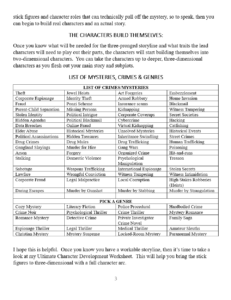 As you use this worksheet and these techniques, a crime skeleton will emerge. Some attempts at this will go flat in the early stages for any number of reasons. But some storylines will begin to almost shape themselves.
As you use this worksheet and these techniques, a crime skeleton will emerge. Some attempts at this will go flat in the early stages for any number of reasons. But some storylines will begin to almost shape themselves. Writing a novel is a huge undertaking. There are many things that go into the writing of a fiction story. The best tip I can pass on is this: Break everything down into little bite-sized pieces. By doing this, you can reduce a huge project down to do-able portions that can be done whether you have 2 hours a week to write or two full days! It only requires a little planning and organization.
Writing a novel is a huge undertaking. There are many things that go into the writing of a fiction story. The best tip I can pass on is this: Break everything down into little bite-sized pieces. By doing this, you can reduce a huge project down to do-able portions that can be done whether you have 2 hours a week to write or two full days! It only requires a little planning and organization. It’s important to keep reading as your own journey as a writer continues. Each author has a different style and uses different storytelling techniques. The stories don’t even have to be great. You can learn from the good, the bad and the bland. Just analyzing what made a book bland is a great lesson in itself. Did the story need more action? Did the story get stuck somewhere?
It’s important to keep reading as your own journey as a writer continues. Each author has a different style and uses different storytelling techniques. The stories don’t even have to be great. You can learn from the good, the bad and the bland. Just analyzing what made a book bland is a great lesson in itself. Did the story need more action? Did the story get stuck somewhere? 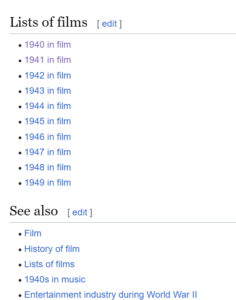 or other books you read. Reading other authors is crucial no matter where you are on the writing spectrum. However, when you’re new, you can learn a lot from watching mystery or crime noir movies. I like movies from the 1940s, 1950s, and 1960s. The movies in these decades didn’t have CGI and the directors had to use the stage to tell the story. They used wider shots and props to assist the storytelling. By watching these older movies, you can learn a lot regarding writing.
or other books you read. Reading other authors is crucial no matter where you are on the writing spectrum. However, when you’re new, you can learn a lot from watching mystery or crime noir movies. I like movies from the 1940s, 1950s, and 1960s. The movies in these decades didn’t have CGI and the directors had to use the stage to tell the story. They used wider shots and props to assist the storytelling. By watching these older movies, you can learn a lot regarding writing. 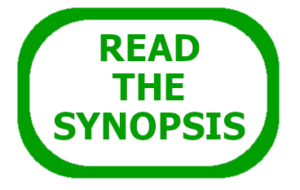 It’s a good idea to read the synopsis before you view the movie. Knowing at least a basic outline of the story will allow you to absorb more as an author. If you go into the movie blindly, you will be “experiencing the movie” as a viewer only. By knowing ahead of time what story will be unfolding, it will allow you to watch specifically for certain scenes to unfold. You can watch what tools are used to move the story along.
It’s a good idea to read the synopsis before you view the movie. Knowing at least a basic outline of the story will allow you to absorb more as an author. If you go into the movie blindly, you will be “experiencing the movie” as a viewer only. By knowing ahead of time what story will be unfolding, it will allow you to watch specifically for certain scenes to unfold. You can watch what tools are used to move the story along. 
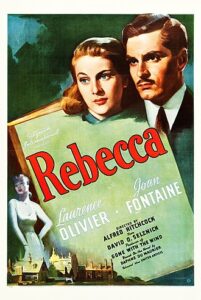 If you are looking for a suggestion, I would suggest Rebecca for the first movie. This movie was directed by Alfred Hitchcock and it has a lot of gothic atmosphere. There is also a psychological plotline in this story so it is a goldmine for learning storytelling tools.
If you are looking for a suggestion, I would suggest Rebecca for the first movie. This movie was directed by Alfred Hitchcock and it has a lot of gothic atmosphere. There is also a psychological plotline in this story so it is a goldmine for learning storytelling tools. 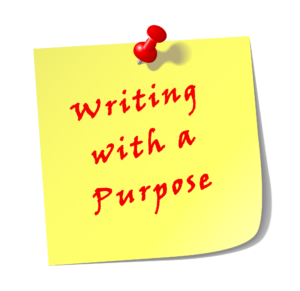 veryone writes for a reason. Knowing why you write is important, especially as a beginner writer. Writing a book is not hard, but it can be a long process. If your purpose for writing is clear, this will give you the energy and inspiration to spur you on if and/or when the going gets a little tough.
veryone writes for a reason. Knowing why you write is important, especially as a beginner writer. Writing a book is not hard, but it can be a long process. If your purpose for writing is clear, this will give you the energy and inspiration to spur you on if and/or when the going gets a little tough.
 I'm old enough to remember 'phone guys' that worked for Bell South or whatever the phone company was called back then. These men -- they didn't have phone women back then -- would show up with big toolbelts and gaffs or lineworker boots on. These boots had cleats or little metal spikes in them that was a safety feature. These men know everything about the phone system. They would climb the wooden telephone poles and they could fix phones outside on the pole or inside in the houses. They were familiar with the entire system. That is one group of technical workers that have fallen away.
I'm old enough to remember 'phone guys' that worked for Bell South or whatever the phone company was called back then. These men -- they didn't have phone women back then -- would show up with big toolbelts and gaffs or lineworker boots on. These boots had cleats or little metal spikes in them that was a safety feature. These men know everything about the phone system. They would climb the wooden telephone poles and they could fix phones outside on the pole or inside in the houses. They were familiar with the entire system. That is one group of technical workers that have fallen away. Very often life dishes out some hard times to some of us. Did you experience, survive and prosper through some difficult times that you feel compelled to write a memoir about? You don't have to have been a famous celebrity or someone with a Moses-like mission. You may have fell on hard times and you want to share your experience, strength or faith that kept you going. People love inspirational stories.
Very often life dishes out some hard times to some of us. Did you experience, survive and prosper through some difficult times that you feel compelled to write a memoir about? You don't have to have been a famous celebrity or someone with a Moses-like mission. You may have fell on hard times and you want to share your experience, strength or faith that kept you going. People love inspirational stories. When I first decided to write a novel, it took me one full year (I’m not kidding!) to even come up with a crime. Today, using these methods I’m about to reveal, it only takes me two to three days to think up three or four mystery scenarios.
When I first decided to write a novel, it took me one full year (I’m not kidding!) to even come up with a crime. Today, using these methods I’m about to reveal, it only takes me two to three days to think up three or four mystery scenarios.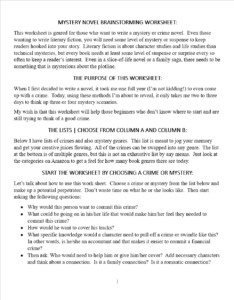 Let’s talk about how to use this work sheet. Choose a crime or mystery from the list below and make up a potential perpetrator. Don’t waste time on what he or she looks like. Then start asking the following questions:
Let’s talk about how to use this work sheet. Choose a crime or mystery from the list below and make up a potential perpetrator. Don’t waste time on what he or she looks like. Then start asking the following questions: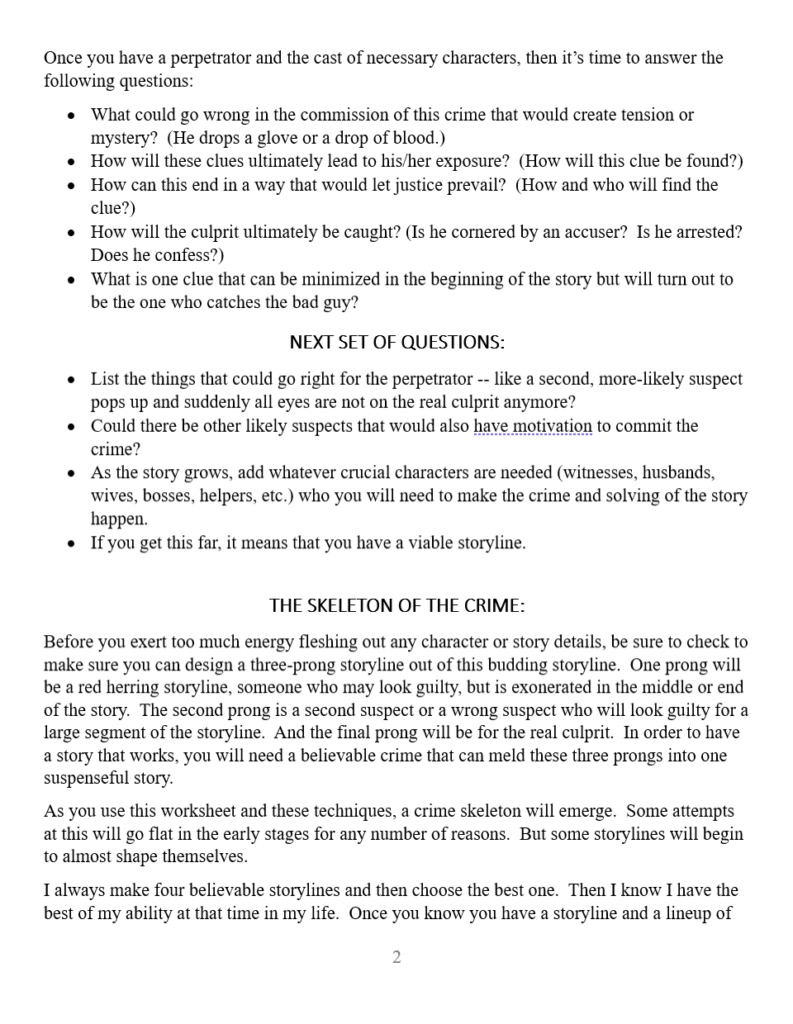 Once you have a perpetrator and the cast of necessary characters, then it’s time to answer the following questions:
Once you have a perpetrator and the cast of necessary characters, then it’s time to answer the following questions: In Layer 8, I do a read-back. In Microsoft Word, I use the Read-Aloud feature that is contained on the Review Tab. By listening to the book read aloud by someone else, it doesn't skip over mistakes like I do as the author. By the time I'm finished with Layer 7, I've read and reread this book too many times to trust my eyes to spot every error.
In Layer 8, I do a read-back. In Microsoft Word, I use the Read-Aloud feature that is contained on the Review Tab. By listening to the book read aloud by someone else, it doesn't skip over mistakes like I do as the author. By the time I'm finished with Layer 7, I've read and reread this book too many times to trust my eyes to spot every error.


 We compiled the novel into a Word document and named it "Manuscript from Scrivener". That's where we now pick up with Layer 7.
We compiled the novel into a Word document and named it "Manuscript from Scrivener". That's where we now pick up with Layer 7.